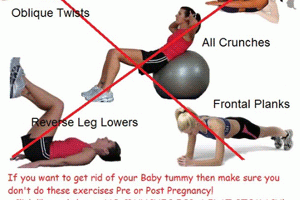
Newer studies are also indicating much longer lasting health benefits for babies and children of mothers who maintain a healthy weight and level of fitness during pregnancy. The safety of both moderate intensity cardiovascular exercise and light to moderate resistance training has been confirmed in multiple large studies. As with anything, being sensible is the key and it’s a good idea to check with your health provider who knows your individual circumstances.
What is recommended?
Generally 150 minutes per week of moderate intensity exercise is recommended (or 75 minutes of vigorous exercise). Bouts of cardiovascular exercise should be in at least 10-minute blocks. Ideally you should combine cardiovascular with some resistance training and pelvic floor exercises. As a good guide to what “moderate intensity” is you can apply the “talk test” – basically you should be just able to hold a conversation while exercising (but not be able to sing).
Modifications may need to be made as your pregnancy progresses, taking into account the changes in your body (e.g. ligaments are more relaxed/loose, changing centre of gravity, often your blood pressure drops in the second trimester).
Most women can generally continue with their regular exercise regime, perhaps with some modifications made as the pregnancy progresses.
Examples of safe exercise in pregnancy
- Walking/jogging
- Swimming
- Stationary cycling
- Low impact aerobics classes
- Gentle low-moderate weights (avoiding really heavy weights)
- Pilates/yoga
Factors to consider in exercising safely
- Avoid over-heating – don’t exercise in the heat of the day
- Stay well hydrated
- Wear good fitting supportive shoes
- Care with activities requiring balance as your centre of gravity changes
- Avoid activities where abdominal trauma may occur – e.g. contact sports, sports with risk of high impact falls (e.g. road cycling, skiing)
- Avoid scuba diving or exercising at high altitude
- Stretch gently, remembering that the hormones of pregnancy cause your ligaments become more lax
- After the first trimester, avoid activities where you lie flat on your back – your uterus can compress the major blood vessel that returns blood to the heart.
- Don’t exercise to the point of utter exhaustion and listen to your body
When to stop exercising/seek medical attention
- Abdominal pain
- Uterine contractions
- Vaginal bleeding or water discharge/gush
- Excessive shortness of breath (beyond which you would normally experience with your usual exercise)
- Chest pain
- Dizziness or fainting
- Reduced foetal movements
- Anything that doesn’t feel “right” – it is always best to check.
Resources
Sports Medicine Australia have a great handout on exercise in pregnancy – it has some information that will help you in identifying the level of intensity you need to aim for.
Click here for more info.













